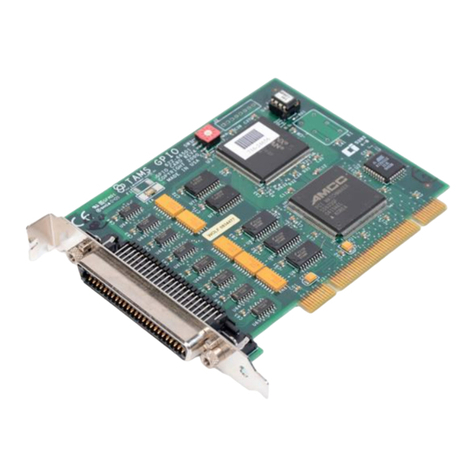Interface Configuration
After installation of the driver software and loading of the t61622 kernel module
(handled automatically by the RPM package), the SICL configuration file /etc/
opt/sicl/hwconfig.cf needs to be edited to reflect the new interface
card. The version of SICL you are using includes the /opt/sicl/bin/
iosetup program, this can be used in place of manually editing the
hwconfig.cf file. You will still want to refer to this section for a description of
the fields.)
After configuration, the system does NOT need to be rebooted, nor does the
driver module need to be reloaded. However, the SICL iclear function should be
used after making changes to ensure that the configuration changes have taken
effect. See the man page on iclear (1).
For further configuration information, see the “Installing and Configuring the I/O
Libraries” chapter of the I/O Libraries Installation and Configuration Guide for
Linux.
For each TAMS 622-66501 card that you want to configure in your system, you
need to add a line to the hwconfig.cf file. While most users do not need to
see or use this file directly, having used iosetup to make configuration changes,
the fields and their respective meanings are important to know to properly use
the GPIO card.
The content of each line is as follows:
<lu> <name> t61622 <location> <sig> <polarity> <mode> <read_clk> <delay>
The fields are defined as:
Logical Unit (lu) The SICL Logical Unit number for this interface. This number
must be unique for the SICL interfaces currently configured on this machine. A
good choice for a logical unit number would be 12.
Symbolic Name (name) The unique SICL symbolic name. Agood choice would
be “gpio”.
Location The unique ID specified by the rotary DIP switch on the TAMS 622-
66501 being configured. This value is in the range 0-9
Signal (sig) Selects an Unix signal to be used by t61622 driver for interrupts. The value
must be in decimal format and must be 0 or one of the values defined in the signal.h
header file. Allowed signals are SIGIOT, SIGUSR1,
8





























